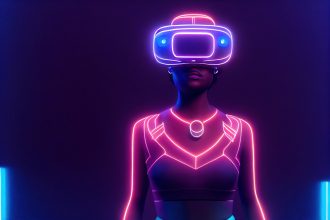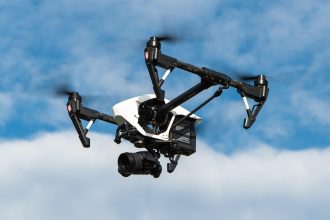VR and AR Headsets In 2025, VR and AR devices have evolved far beyond gaming tools. They’re revolutionizing industries, transforming education, and redefining how we experience the world around us.
In this article, we’ll dive deep into how VR and AR headsets are bridging the gap between the digital and physical worlds, what innovations are shaping their future, and why this technology is more than just a passing trend.
The Rise of Immersive Technology
From Sci-Fi to Everyday Reality
Not long ago, stepping into a virtual world or seeing digital objects overlayed on real life seemed like science fiction. But thanks to rapid advancements in computing power, motion tracking, and visual display technology, VR and AR headsets have become part of mainstream tech.
- Virtual Reality (VR) immerses users in a completely digital environment.
- Augmented Reality (AR) enhances real-world surroundings by adding digital layers of information, visuals, or interactivity.
Together, these technologies are creating immersive experiences that redefine entertainment, work, and communication.
How VR and AR Headsets Work
Understanding the technology behind these headsets helps explain their growing popularity.
1. Virtual Reality Headsets
VR headsets use high-resolution screens, motion sensors, and 3D spatial audio to transport users into virtual spaces. With hand controllers and haptic feedback, users can interact naturally within simulated environments.
Popular examples (2025):
- Meta Quest 3
- Apple Vision Pro
- Sony PlayStation VR2
2. Augmented Reality Headsets
AR headsets, like Microsoft HoloLens and Magic Leap 2, project digital imagery onto transparent lenses. This allows users to see both real-world surroundings and digital overlays simultaneously.
Common uses include:
- Virtual meetings and training
- Engineering and architectural visualization
- Real-time translation and navigation
These devices are combining to create what’s now called Mixed Reality (MR) — where the boundary between real and digital becomes almost invisible.
VR and AR Headsets in 2025: A Market on the Rise
The global market for VR and AR technology is projected to exceed $150 billion by 2025. This explosive growth is fueled by new use cases across industries, increased affordability, and powerful AI integration.
Key trends driving adoption:
- Enhanced AI-powered interaction
- 5G connectivity for seamless experiences
- Compact, lightweight headset designs
- Integration with IoT and cloud computing
Let’s look at how different industries are harnessing the potential of these immersive technologies.
1. Gaming and Entertainment: Beyond the Screen
The gaming industry was the first to fully embrace VR and AR. But today, it’s no longer just about fun — it’s about feeling part of the story.
VR gaming lets players step into vast, realistic worlds, where every movement and gesture matters. On the other hand, AR gaming overlays digital characters or objects into the real world — like Pokémon GO on steroids.
In 2025, key innovations include:
- Full-body motion tracking for lifelike gameplay
- Haptic suits providing touch sensations
- Cloud-based VR gaming eliminating the need for expensive hardware
Entertainment has also gone virtual. Concerts, theater shows, and sports events are now accessible through immersive VR experiences, letting audiences “attend” from anywhere in the world.
2. Education and Training: Learning in Immersive Worlds
Imagine learning history by walking through ancient Rome or studying biology by exploring the human body from the inside — that’s what VR and AR headsets enable today.
Benefits in education and training:
- Hands-on learning: Students interact with virtual environments rather than just reading textbooks.
- Safe simulations: Medical and engineering trainees can practice complex procedures without real-world risks.
- Global collaboration: Virtual classrooms bring together learners from around the world in shared 3D spaces.
By blending imagination with real learning experiences, VR and AR are making education more engaging, personalized, and accessible.
3. Healthcare: Healing Through Immersion
One of the most impactful uses of VR and AR technology is in healthcare. From therapy to surgery, these headsets are saving lives and improving care quality.
Key medical applications:
- Virtual surgery simulations: Surgeons practice on lifelike 3D models before real operations.
- Pain management: VR environments help patients manage chronic pain through distraction therapy.
- Mental health treatment: Exposure therapy through VR aids in treating PTSD, anxiety, and phobias.
- AR-assisted surgery: Surgeons use AR overlays for real-time data visualization and enhanced precision.
These innovations are turning once-impossible medical procedures into safer, faster, and more effective experiences.
4. Business and Remote Work: The Virtual Office Revolution
The shift toward remote work has made VR and AR headsets essential tools for collaboration. Instead of flat video calls, professionals now meet in 3D virtual workspaces that mimic real offices.
In 2025, businesses use VR/AR for:
- Virtual conferences and brainstorming sessions
- Immersive team-building activities
- 3D product demonstrations and digital twins
- Remote maintenance and troubleshooting
These technologies make remote work more engaging and productive, breaking geographical barriers and reducing travel costs.
5. Real Estate and Architecture: Visualizing Before Building
Before construction even begins, architects and clients can “walk through” projects using VR and AR.
How it helps:
- VR tours allow clients to explore buildings before they exist.
- AR overlays show how renovations or new structures will look on-site.
- Developers can spot design flaws early, saving money and time.
With photorealistic rendering, clients gain a clear sense of space, lighting, and layout — turning blueprints into vivid experiences.
6. Retail and E-Commerce: The Try-Before-You-Buy Revolution
VR and AR are redefining the shopping experience by merging the convenience of online shopping with the tangibility of in-store visits.
Examples:
- AR apps let customers “try on” clothes, accessories, or makeup virtually.
- VR showrooms display products in lifelike 3D.
- Furniture brands use AR to help customers visualize items in their homes.
This fusion of imagination and practicality boosts consumer confidence and reduces returns — a win-win for both buyers and businesses.
7. Tourism and Travel: Exploring the World Without Leaving Home
With VR and AR headsets, you can visit the Eiffel Tower, dive into the Great Barrier Reef, or hike the Himalayas — all from your living room.
Use cases in travel:
- Virtual tours of destinations, hotels, and attractions
- AR travel guides providing real-time information
- Cultural immersion experiences for students and explorers
Even airlines and travel agencies are using immersive previews to inspire customers before they book a trip.
The Role of Artificial Intelligence in VR and AR
AI has become the secret ingredient behind immersive realism. It helps VR and AR systems understand user behavior, predict actions, and personalize experiences.
AI-driven advancements include:
- Eye tracking for realistic interaction
- Voice recognition for intuitive control
- Spatial mapping for more natural movement
- Emotion detection for adaptive storytelling
With AI, virtual experiences feel alive — reacting intelligently to each user’s input and emotion.
Challenges of VR and AR Headsets
While the potential is massive, the road ahead has a few bumps.
1. Cost and Accessibility
High-end headsets still come at a premium price, making them inaccessible for some consumers.
2. Comfort and Battery Life
Long sessions can cause fatigue or motion sickness. Developers are focusing on ergonomic designs and longer battery performance.
3. Content Availability
As the market grows, the demand for diverse, high-quality VR/AR content continues to rise.
4. Privacy Concerns
Since these headsets capture vast amounts of visual and behavioral data, ensuring user privacy remains critical.
Addressing these issues will determine how fast VR and AR become truly universal.
What the Future Holds: The Next Frontier of Immersion
By 2030, experts predict VR and AR will blend seamlessly into our daily lives — as natural as using a smartphone today.
Future innovations may include:
- Ultra-thin, glasses-like AR devices
- Brain-computer interfaces enabling thought-controlled experiences
- Photorealistic avatars powered by AI
- Holographic mixed-reality environments for shared experiences
The line between imagination and reality will continue to blur, creating an entirely new dimension of human interaction.
Tips for Embracing VR and AR Today
If you’re ready to explore this immersive world, here’s how to start:
- Choose your headset wisely – Match your goals (gaming, work, education) to the right device.
- Experiment with apps – Explore VR museums, AR design tools, or fitness games.
- Stay updated – Follow industry trends and firmware upgrades.
- Prioritize comfort – Invest in adjustable straps and lightweight models.
- Think beyond fun – Consider how VR/AR can boost productivity, learning, or creativity.
Conclusion: The Power to Imagine, the Power to Create
VR and AR Headsets: Bridging the Gap Between Reality and Imagination perfectly captures the essence of our technological age. These devices are no longer confined to futuristic dreams — they are shaping our present.
From healthcare and education to gaming and business, VR and AR are expanding what’s possible. They’re not just enhancing reality — they’re redefining it.
As we continue merging imagination with innovation, one thing is certain: the next big world we explore might not be out there — it could be right before our eyes.





